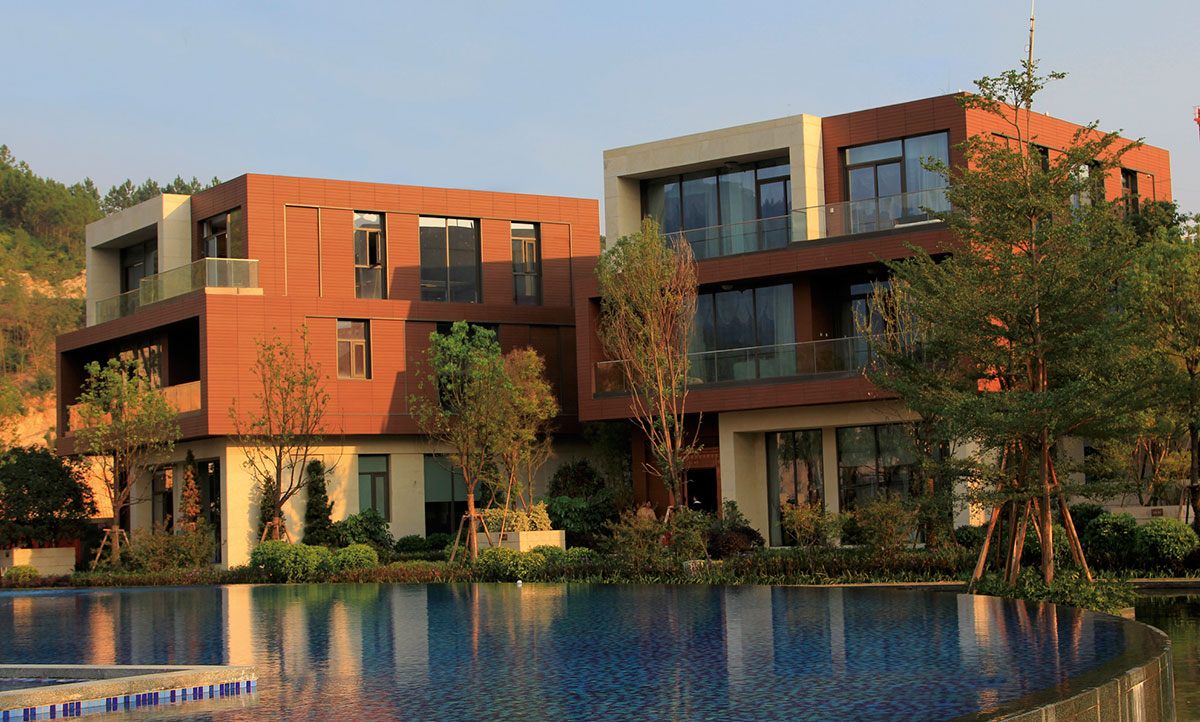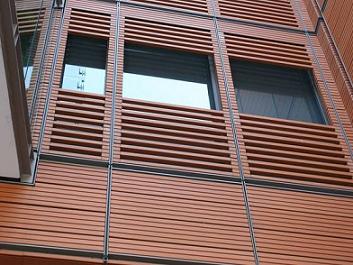LOPO China Terracotta Rainscreen Ventilated Facades System.
Terracotta rainscreens have developed into patented proprietary systems from prototypes within the last ten years. Over that time the sizes of terracotta panels have increased and fixing systems have developed for use as solar shading screens to glazed walls as part of an overall rainscreen system for a building facade. LOPO China Hollow terracotta sections are reinforced with aluminium sections set into them to form louvred screens that can match with adjacent areas of cladding. Terracotta is fixed either on rails, into aluminium or stainless steel panels, or on individual brackets like masonry cladding with concealed fixings. Vertically-set or horizontally-set rails are used to suit a range of joint arrangements that imitate traditional masonry bonds, or can be stack bonded in the manner of wall tiling or glass blocks.
Development, innovation and investment in clay preparation and kiln firing technology has now made LOPO China possible to create single terracotta rainscreen tiles that can be up to 1800mm long. Fixing systems have evolved to allow tiles of this size to be installed in both horizontal and vertical orientations. For the first time, this allows specifiers to use an individual tile in a vertical plane to span floor to floor. LOPO China Terracotta Rainscreen System is designed for use as a decorative and protective facade over the external walls of a building. The system offers a choice of vertical or horizontal aluminium rail supports and a range of terracotta modules, in a choice of colours and finishes.
Ventilated facades are more than just a design gesture. They provide energy efficient, long-lasting properties and a ventilated facade system results in a variety of advantages:
- A chimney effect draws air through the cavity, aiding in the removal of heat and moisture from rain or condensation.
- The rainscreen also blocks some solar gain and accommodates continuous insulation, considerably reducing the need for air conditioning.
- These results are shown to improve comfort within living areas and create a low-maintenance environment. The dry and comfortable conditions of the building also make a positive contribution to indoor environmental quality.




